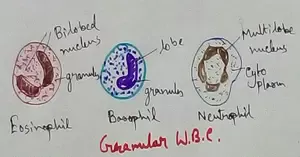Worksheet on Adaptation in Animals
Worksheet on adaptation in animals contains various types of questions.
We know animals are classified according to their habitats as terrestrial (living on land), aquatic (living in water), amphibians (living on both land and water), arboreal (living on trees) and aerial (flying animals).
I. What are they called?
(i) Animals that live in water:
(ii) Animals that live on trees:
(iii) Animals that live on land:
(iv) Animals that live on both land and water:
(v) Animals that spend much of their time in air:
II. Give one word
for:
(i) Long winter sleep:
(ii) Going far away from home in winter and coming back in summer:
(iii) Merging with surroundings to hide from the enemy:
III. Tick (√) against the true statement and (X) against the false one:
(i) Hedgehogs have spines to defend themselves from their enemies.
(ii) Herbivores have sharp claws.
(iii) Lizards sleep during the entire winter period.
(iv) Dolphins breathe through gills.
(v) Parasites do not have teeth.
IV. Answer the following questions:
(i) Why is the earth suitable for existence of life?
(ii) What are the two kinds of living things?
(iii) What do you understand by habitat?
(iv) Why do some animals hibernate in winter?
V. How do the following animals protect themselves from their enemies?
(i) chameleon
(ii) deer
(iii) snails
VI. What kind of teeth do the following have?
(i) horse
(ii) cheetah
VII. Give two examples for each of the following types:
(i) terrestrial animals
(ii) aquatic animals
Check the answers of the worksheet on adaptation in animals:
Answers:
I. (i) aquatic animals
(ii) arboreal animals
(iii) terrestrial animals
(iv) amphibians
(v) aerial animals
II. (i) migration
(ii) camouflage
(iii) hibernation
III. (i) √
(ii) X
(iii) √
(iv) X
(v) √
IV. (i) On Earth there is enough air, water, sunlight and food for existence of life.
(ii) The two kinds of living things are animals including human beings and plants.
(iii) A region having specific climatic conditions and accordingly specific types of animals and plants is called habitat.
(iv) Some animals like lizard, snakes and rats cannot bear cold so they hibernate in winter.
V. (i) changing color
(ii) running away faster
(iii) covered with shells
VI. (i) Horse have sharp front teeth to cut the grass and flat grinding teeth to chew the grass.
(ii) Cheetah have long sharp teeth to tear the flesh.
VII. (i) lion and buffalo
(ii) fish and frog
Recent Articles
-
Formed Elements of Blood | Erythrocytes | ESR |Leukocytes |Neutrophils
Jan 15, 26 01:25 AM
Formed elements formed elements are constitute about 45 % of blood afeias haematocrit value packed cell volume mostly of red blood corpuscles and are of 3 types- erythrocytes, leukocytes and blood pla… -
What Is Plasma? | Blood Plasma | Proteins | Nutrients | Cholesterol
Nov 07, 25 10:29 AM
Blood is a mobile fluid which is a connective tissue and is derived from the mesoderm like cell any other connective tissue. Colour of blood is reddish and that flows inside the blood vessels by means… -
Disorders of Respiratory System | Tuberculosis | Pleurisy | Emphysema
Oct 28, 25 11:39 PM
Tuberculosis is very common disease and is caused by a type of bacteria called Mycobacterium tuberculosis. This disease causes different trouble in the respiration and infection of several parts of th… -
Regulation of Respiration | Respiratory Centres | Inspiratory Area |
Oct 14, 25 12:13 AM
Respiratory Centre is the area that controls the rate of respiration and it is observed to be located in medulla oblongata and pons. Respiratory Centre has the following will dispersed components like… -
Explain Transport of Gases | External Respiration | Tissue Respiration
Oct 09, 25 11:35 PM
In humans gaseous exchange is completed in the following ways the steps are - External Respiration or Breathing - Breathing in false taking in of Oxygen and giving out of carbon dioxide in the body. M…





New! Comments
Have your say about what you just read! Leave me a comment in the box below.